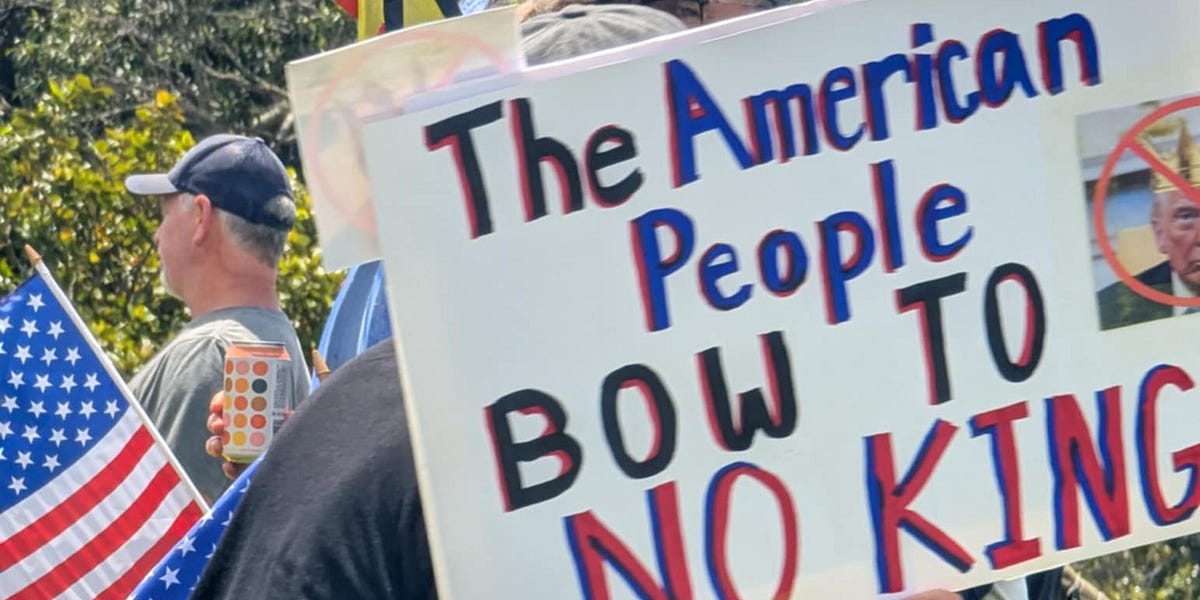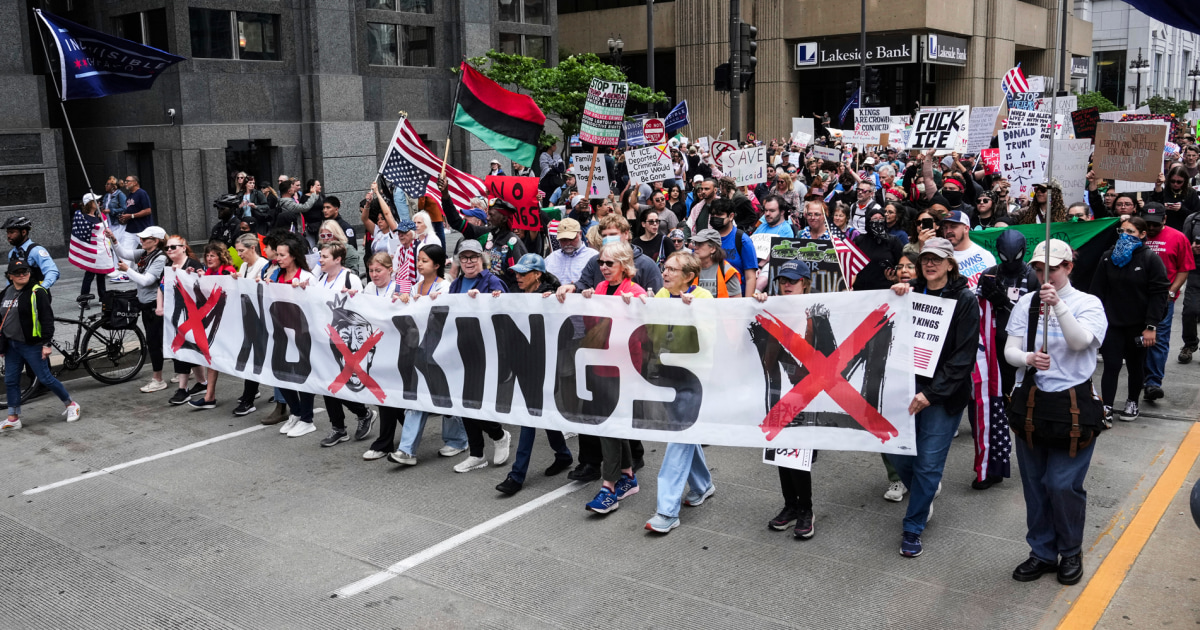The No Kings Resistance is not going anywhere.
This is still the country I grew up in.

www.noahpinion.blog
I went to a protest today, for the first time in years. It was the “No Kings” protest in San Francisco, part of a nationwide series of protests against Donald Trump’s authoritarianism. The protests reportedly
drew about 5 million people across the country — about the same as the Women’s March in 2017.
In almost every city, protests were completely peaceful — the only city to see significant violent clashes between protesters and police was
Los Angeles, where
leftist career-activists have gathered in recent days. Certainly, the SF protest I attended was totally nonviolent — I didn’t even see a single police officer. No stores were looted, no windows smashed, no cars overturned, no bricks thrown.
This was also the single most
patriotic protest I’ve ever been to. Tons of people were carrying American flags — they absolutely overwhelmed the number of Palestine, Mexico, trans, Ukraine, and other flags. Many of the signs referenced the Constitution, the Statue of Liberty, or the American Revolution of 1776:
View attachment 18881
Notably, there was none of the angry energy and racial grievance of the BLM protests of summer 2020, nor the anti-Americanism of the Palestine protests. There was no 1619 or 1948, only 1776. It was all just liberty and democracy and the Constitution. My overpowering impression was that
this was the country I grew up in. These were the things that Americans valued — or at least, said they valued — when I was young.
The size of the "No Kings" protest across the nation underscores how the anti-Trump protest movement is getting into a rhythm.

www.msnbc.com
Millions of Americans peacefully participated in
“No Kings” protests Saturday, demonstrating against — in the words
of the organizers — “authoritarianism, billionaire-first politics, and the militarization of our democracy.” They came out in massive numbers in hundreds of locations, from urban metropolises to small towns to
rural areas across the country. Together the attendees dwarfed the
sparse crowds at
President Donald Trump’s military parade the same day in Washington, where the crowds
fell far below expectations.
It’s satisfying that such a vast number of Americans came out — many of them in rain, and
many of
them as
first time-protesters — to reject Trump’s autocratic agenda. It’s even more satisfying to notice that taking to the streets is emerging as a habit of the body politic: Mass protests are becoming more common, and fatigue from resisting Trump seems to have ebbed in a definitive way.
In the early months of Trump’s second term, it was common to ask
“Where is the resistance?” Whereas Trump’s first inauguration triggered
the largest single-day protest in American history, his second inauguration was met with
far smaller demonstrations. Combined with Democratic Party leaders’ timidity and a business community that was much more receptive to Trump than in his first term, there was a widespread sense that Trump’s victory had fundamentally demoralized the left and that
MAGA was the new normal.
In April, that began to change with the
“Hands off!” rallies that swept scores of cities across the country. A group of researchers affiliated with Harvard University’s Crowd Counting Consortium
have said that those protests were the largest the group had recorded “since the nationwide uprising following the killings of Ahmaud Arbery, George Floyd, and Breonna Taylor in 2020.” Those rallies were followed just two weeks later by the first round of national
“No Kings” protests. Combined, the researchers estimate that those two days “account for between 1.2 million and 1.8 million in participants.”
(This): Activist fatigue is a very real thing, and I can understand why Trump’s second inauguration was met by more of a grumble than a shout. That the anti-Trump coalition is getting its footing and establishing a rhythm with wide-scale protests may be a sign that some have gotten a bit of rest — or have decided that, tired as they may be, the pace of democratic backsliding is intolerable. Whatever the reason, momentum is building, and when public protest movements become big and loud enough, they can be a source of energy and inspiration unto themselves.

www.forbes.com

www.pewresearch.org







